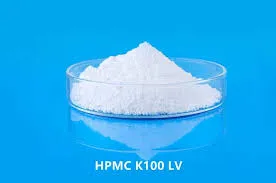
Oct . 14, 2024 06:02 Back to list
Understanding the Solubility Characteristics of Hydroxypropyl Methyl Cellulose in Various Solvents
Hydroxypropyl Methyl Cellulose Solubility Understanding Its Importance in Various Applications
Hydroxypropyl Methyl Cellulose (HPMC) is a versatile and widely used cellulose ether derived from natural cellulose. It is known for its unique chemical properties, particularly its solubility characteristics, which make it invaluable across various industries, including pharmaceuticals, food, construction, and cosmetics. Understanding the solubility of HPMC is essential for optimizing its use in these applications.
HPMC is primarily soluble in water, and this solubility varies based on its chemical structure, degree of substitution, and molecular weight. The hydroxypropyl and methyl groups attached to the cellulose backbone increase water affinity and enhance solubility. This property allows HPMC to dissolve in hot or cold water, making it an ideal thickening, binding, and film-forming agent. The temperature and pH of the solution also play a vital role in the solubility of HPMC, as higher temperatures generally improve its solubility.
Hydroxypropyl Methyl Cellulose Solubility Understanding Its Importance in Various Applications
In the food sector, HPMC is employed as a food additive, where it acts as a thickener, emulsifier, stabilizer, and gelling agent. Its solubility in water ensures that it can be easily integrated into food formulations, enhancing texture and mouthfeel. For example, it is often used in gluten-free products to improve the dough's elasticity and moisture retention. Additionally, HPMC can help with the stabilization of emulsions and suspensions in food products, ensuring a consistent quality throughout their shelf life.
hydroxypropyl methyl cellulose solubility

The construction industry has also recognized the benefits of HPMC. It is commonly used in cement-based formulations for its superb water retention properties, contributing to improved workability, adhesion, and durability of construction materials like mortar and plaster. The solubility of HPMC in water allows it to disperse evenly within the mix, resulting in a uniform application and enhanced performance of the final product.
In cosmetics, HPMC is valued for its thickening and emulsifying properties. It is often found in lotions, creams, and hair care products, where it helps to create a desirable texture and feel. Its solubility in water allows for easy incorporation into formulations, while its ability to form films provides skin and hair protection by creating a barrier that retains moisture.
While HPMC has numerous advantages, it is important to consider its limitations. Factors such as temperature, concentration, and the presence of other ingredients can all influence the solubility of HPMC. Conducting thorough solubility tests is essential for formulators to achieve the desired consistency and functionality of their products.
In conclusion, the solubility of Hydroxypropyl Methyl Cellulose is a fundamental attribute that underpins its diverse applications across various industries. Its ability to dissolve in water and form gels, films, and emulsions enhances its usability in pharmaceuticals, food, construction, and cosmetics. As research and technology continue to evolve, so too will the understanding and utilization of HPMC's solubility properties, paving the way for innovative applications that meet the demands of modern industries. Understanding these solubility characteristics can empower manufacturers and formulators to leverage HPMC effectively, ensuring that products meet both performance and consumer satisfaction standards.
-
Versatile Hpmc Uses in Different Industries
NewsJun.19,2025
-
Redispersible Powder's Role in Enhancing Durability of Construction Products
NewsJun.19,2025
-
Hydroxyethyl Cellulose Applications Driving Green Industrial Processes
NewsJun.19,2025
-
Exploring Different Redispersible Polymer Powder
NewsJun.19,2025
-
Choosing the Right Mortar Bonding Agent
NewsJun.19,2025
-
Applications and Significance of China Hpmc in Modern Industries
NewsJun.19,2025







